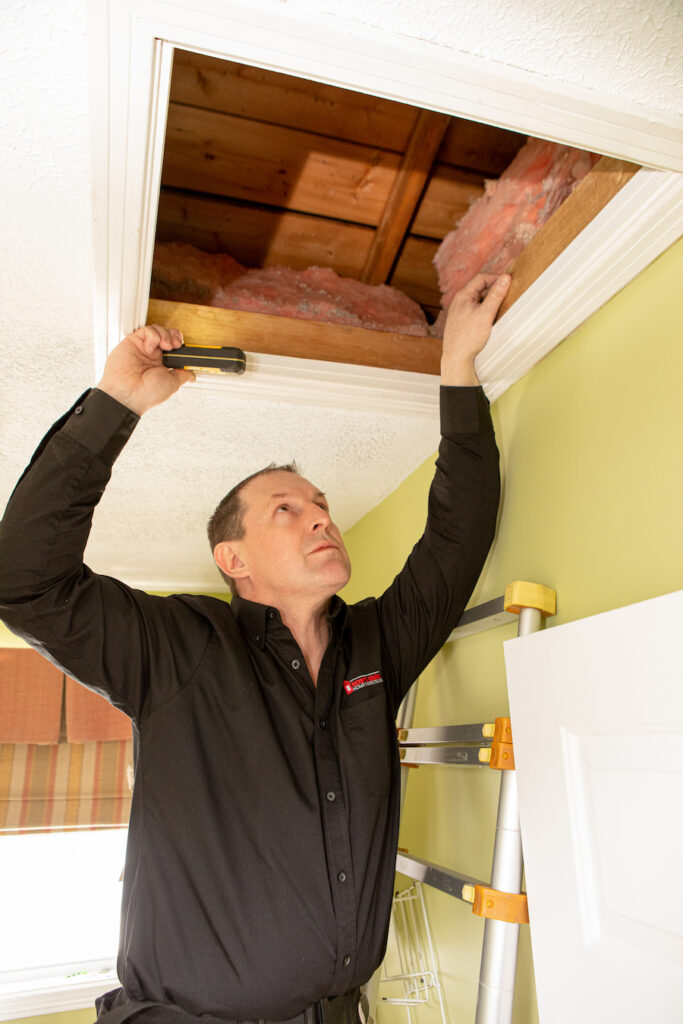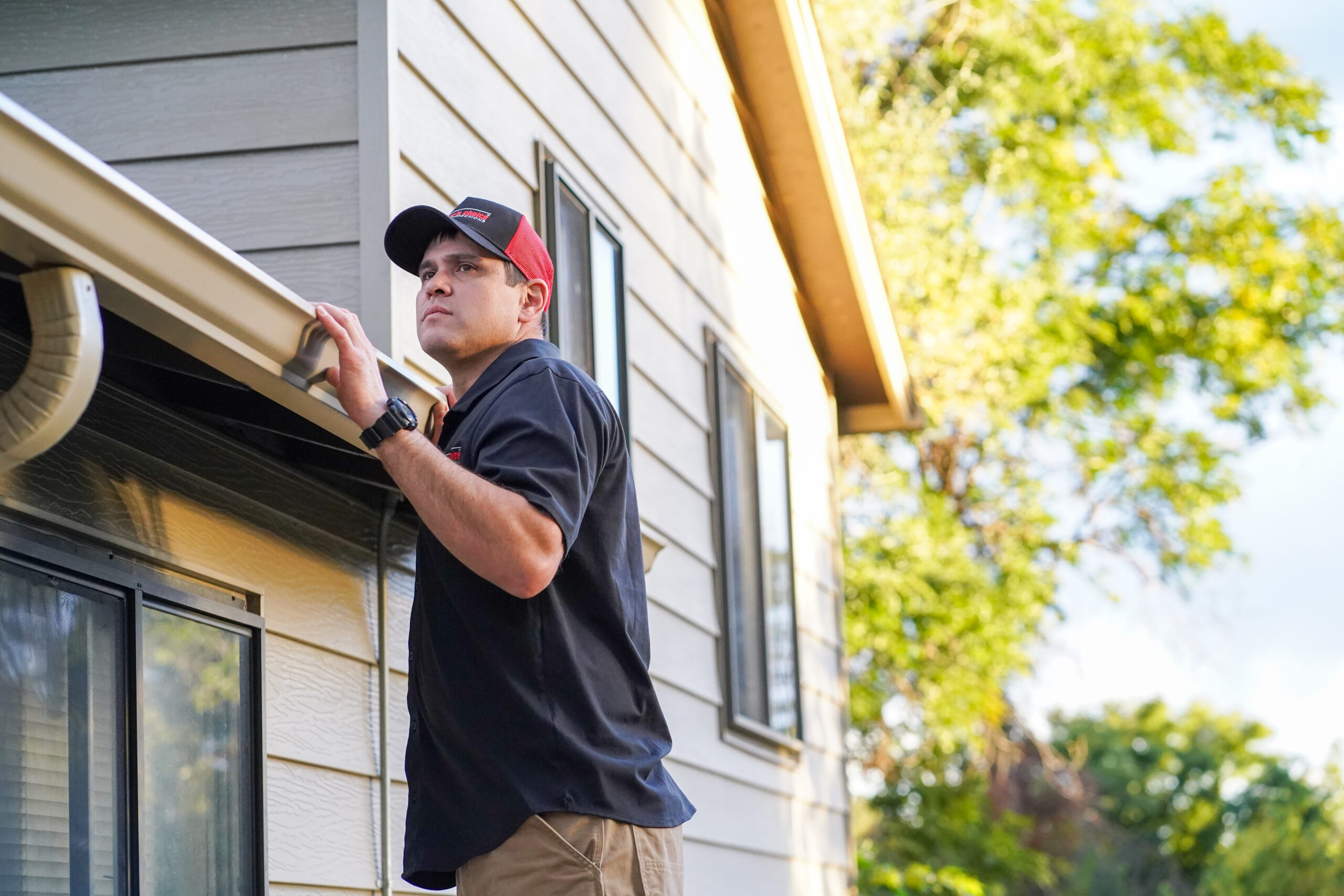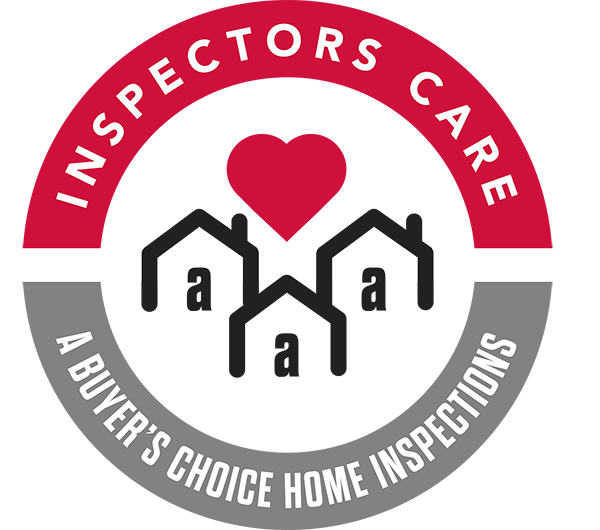Proper ventilation is crucial in maintaining a healthy and safe home environment, yet many homeowners overlook key venting issues, particularly when it comes to bathroom fans and dryers. In fact, two of the most common ventilation issues found by home inspectors are bathroom fans venting into attics and dryers venting inside homes instead of outdoors – both of which can lead to significant damage and health risks.
Following are some tips on how to ensure your home is properly vented. When in doubt, have your home inspector check your ventilation systems. This could save you a lot of trouble in the future.
Bathroom fans venting into attics
A bathroom exhaust fan is designed to remove moisture and odors from the bathroom. If it vents into the attic rather than outside, it introduces excessive moisture into the attic space. Over time, this moisture can cause mould growth, wood rot and insulation damage, compromising the structural integrity of the home. Mould spores may also enter the living areas, potentially leading to respiratory issues and allergic reactions. To prevent this, ensure bathroom fans are vented directly outdoors, with insulated ductwork to prevent condensation.
Tips for bathroom fan ventilation:
- Ducts used to vent bathroom fans should ideally be a rigid or semi-rigid metal duct. Flexible ducts, especially plastic or thin foil ducts, can sag, trap moisture and collect dust. Rigid ducts ensure a smoother airflow and reduce the risk of condensation
- In colder climates, uninsulated ducts in unconditioned spaces (such as attics) can cause condensation within the duct when warm, moist air from the bathroom cools down. This can lead to water accumulation, mould or ice buildup. Insulate the duct with proper wrap to prevent this
- Vent ducts should slope slightly downward toward the outside vent to prevent water from flowing back into the fan housing. This slope encourages any condensation to flow out of the duct rather than pooling in low spots
- Vent ducts should be as short and straight as possible to minimize air resistance. Long ducts or multiple turns reduce airflow efficiency and cause moisture to linger
- Vents should terminate outside with a cap that includes a backdraft damper to prevent cold air, rain and pests from entering. It’s crucial to vent through the roof or a side wall, and never into the attic or soffits, to prevent moisture from being trapped in the attic space
Dryers venting into homes
Dryers produce large amounts of moisture and lint, which can become hazardous when vented into a home rather than outside. The moisture promotes mould and mildew growth, which can deteriorate the foundation and attract pests. Lint build-up in a crawl space or another part of a home where the dryer ends up venting poses a significant fire risk, and it can block airways, reducing indoor air quality.
Tips for dryer ventilation:
- Use rigid or semi-rigid metal ducts for dryer vents. Plastic or foil ducts are prone to kinking, causing lint buildup and restricting airflow, which can lead to overheating and fire risks. Smooth metal ducts offer less resistance, improving efficiency and safety
- Avoid long, winding vent routes that restrict airflow and increase drying times
- Vents caps should have a backdraft damper but no screen, as lint can build up on screens and block airflow. Regularly check and clean the vent cap to ensure proper airflow and prevent lint buildup. You should also clean the dryer vent ducts annually to reduce fire risk. If you’re wondering how to clean your dryer vent or vent cap, be sure to ask your home inspector during the inspection for best results
- Joints between sections of duct should be secured with metal foil tape, not screws, as screws can catch lint and lead to dangerous blockages. Properly secured joints prevent leaks and ensure smooth airflow
Addressing these issues is vital for homeowners. By ensuring that both bathroom fans and dryers vent directly outside, you can protect your home from moisture damage, improve indoor air quality and maintain a healthier living environment. Regular inspections and proper maintenance can help identify any potential venting issues before they cause more serious problems.
Have questions about potential venting issues in your home or looking for details on any of our inspection services? Answers are just a call or email away.
Find an Inspector near you: https://abuyerschoice.com/locations








